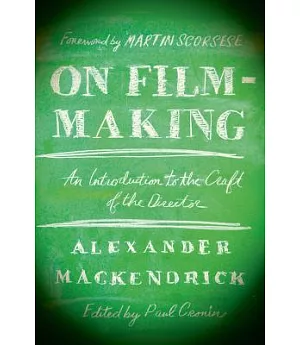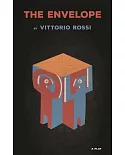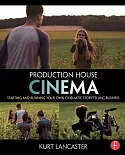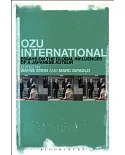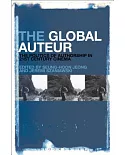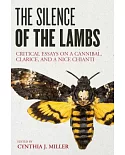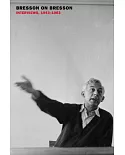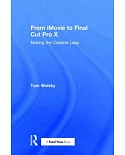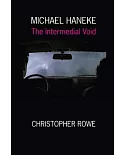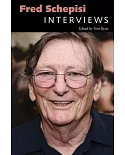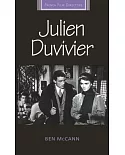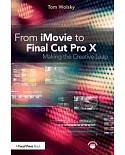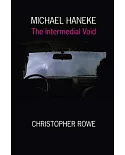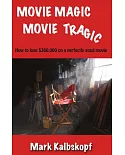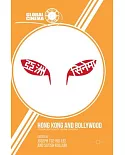A priceless examination of the filmmaker's craft, from the renowned director of Sweet Smell of Success
After more than twenty years in the film industry as a screenwriter, storyboard editor, and director of memorable films such as The Ladykillers, Alexander Mackendrick turned his back
on Hollywood and began a new career as the Dean of one of the country's most demanding and influential film schools. His absolute devotion to the craft of filmmaking served as a powerful
impetus to students at the California Institute for the Arts for almost twenty five years, with a teaching style that included prodigious notes, neatly crafted storyboards, and handouts
containing excerpts of works by Kierkegaard, Aristotle, and others. At the core of Mackendrick's lessons lay a deceptively simple goal: to teach aspiring filmmakers how to structure and write
the stories they want to tell, while using the devices particular to the medium of film to tell their stories effectively.
In this impressive volume, edited by Paul Cronin, the myriad materials that made Mackendrick's reputation as an instructor are collected for the first time, offering a chance for
professionals as well as students to discover a methodology of filmmaking that is challenging yet refreshing in its clarity. Meticulously illustrated and drawing on examples from such classic
films as North by Northwest, Citizen Kane, and Touch of Evil, Mackendrick's elegant lessons are sure to provide inspiration for a new generation of filmmakers.
Alexander Mackendrick directed several films, including The Man in the White Suit, which earned him an Oscar Nomination for Screenwriting. He died in 1993.
Paul Cronin is the editor of Herzog on Herzog.
After more than twenty years in the film industry as a screenwriter, storyboard editor, and director of memorable films such as The Ladykillers, Alexander Mackendrick turned his back
on Hollywood and began a new career as the dean of one of the country's most demanding and influential film schools. His absolute devotion to the craft of film-making served as a powerful
impetus to students at the California Institute for the Arts for almost twenty-five years, with a teaching style that included prodigious notes, neatly crafted storyboards, and handouts
containing excerpts of works by Kierkegaard, Aristotle, and others. At the core of Mackendrick's lessons lay a deceptively simple goal: to teach aspiring filmmakers how to structure and
write the stories they want to tell, while using the devices particular to the medium of film to tell their stories effectively.
In this impressive volume, edited by Paul Cronin, the myriad materials that made Mackendrick's reputation as an instructor are collected for the first time, offering a chance for
professionals as well as students to discover a methodology of filmmaking that is challenging yet refreshing in its clarity. Meticulously illustrated and drawing on examples from such
classic films as North by Northwest, Citizen Kane, and Touch of Evil, Mackendrick's elegant lessons are sure to provide inspiration for a new generation of filmmakers.
"This quite remarkable book—I know nothing in print that is quite like it—records in painstaking yet fascinating detail the options available to the director as he prepares to shoot and as
he does so . . . On Film-making is a sampling of the handouts, often illustrated by his own sketches, that [the author] presented to students over the years. Using these papers, as
coherently edited by Paul Cronin, the attentive student could, I think, make quite a respectable film—well-structured and technically proficient . . . He gives many instructive examples of
how meaning can be fully conveyed through action, not dialogue, shortening running time and enlivening our visual pleasure."—Richard Schickel, Los Angeles Times
"This quite remarkable book—I know nothing in print that is quite like it—records in painstaking yet fascinating detail the options available to the director as he prepares to shoot and as
he does so . . . On Film-making is a sampling of the handouts, often illustrated by his own sketches, that [the author] presented to students over the years. Using these papers,
as coherently edited by Paul Cronin, the attentive student could, I think, make quite a respectable film—well-structured and technically proficient. To make a movie as good or better than
Mackendrick's best, all he would have to supply would be talent, or in a best-case scenario, genius, neither of which, as Mackendrick well knew, can be taught. One foresees that this book
will have a long and useful life in film schools . . . Bookstores are full of biographies and book-length interviews with directors, and magazines are forever profiling them as their new
pictures are released . . . These books and articles tend toward the vague—and occasionally the grandiose . . . Mackendrick will have none of that. There is nothing leonine about the way he
discusses his craft . . . He gives many instructive examples of how meaning can be fully conveyed through action, not dialogue, shortening running time and enlivening our visual
pleasure."—Richard Schickel, Los Angeles Times
"Mr. Cronin's provided a great service in his work on Mackendrick. Tight Little Island and The Ladykillers are perfect films. Any director knows they are worthy of both study
and awe, and this book brings them, and Mackendrick, into contemporary focus beautifully."—David Mamet
"Mackendrick blows the theory merchants out of the picture with a blast of cool Scottish sagacity . . . He offers up the accumulated wisdom of a disciplined and productive career . . .
Whether you use this book to help you reflect on your working practice or see it as an enjoyable insight into the development and execution of a film idea, there's a great deal packed
into these pages."—Zoe Green, The Guardian

